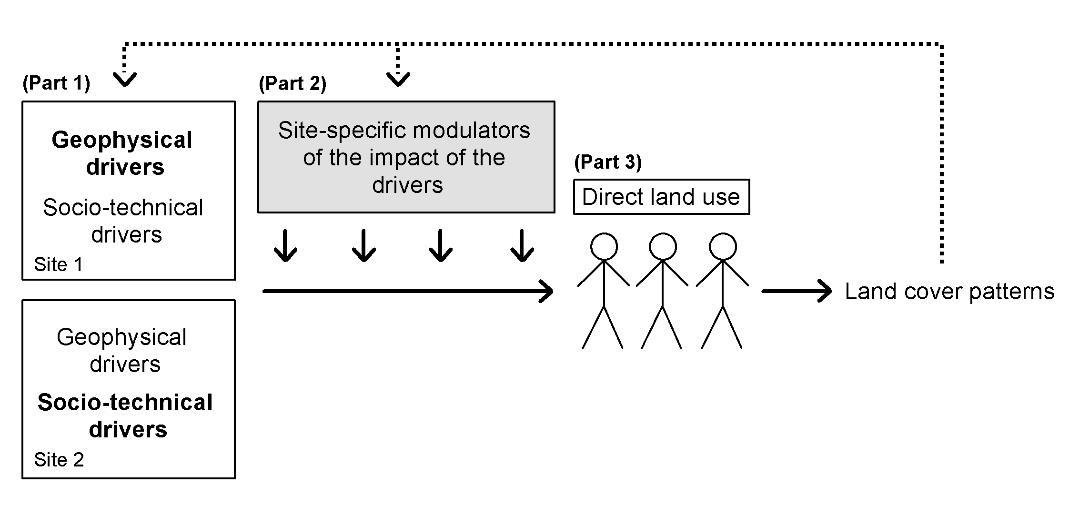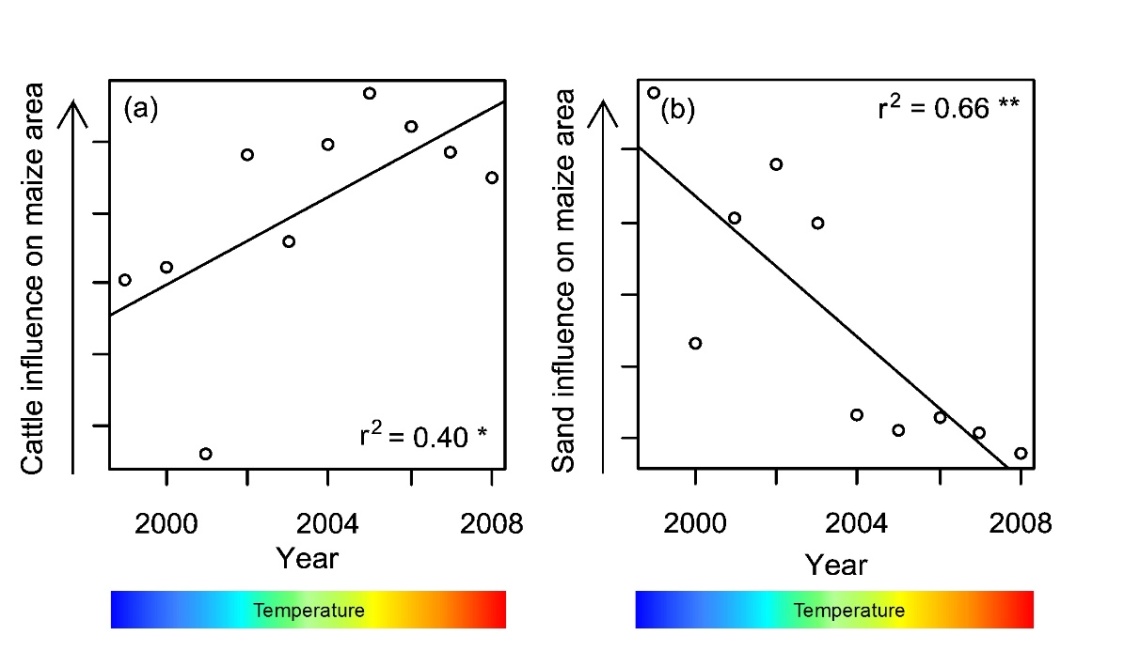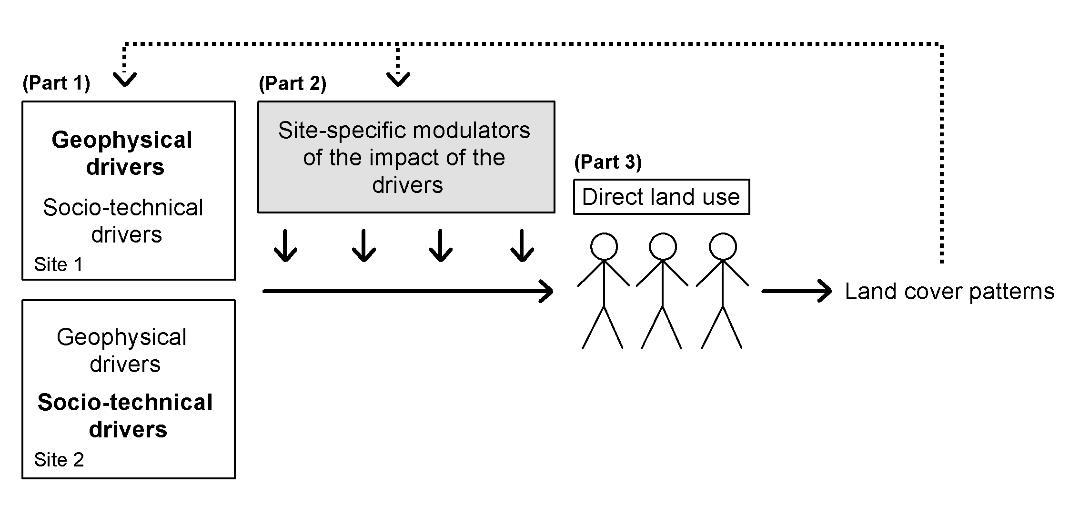Analysis of human-induced land-use changes, resulting in land cover patterns and understanding of its drivers, is hardly a new field of research, but with Homo sapiens continuously being the most dominating species of the Biosphere, the significance of the theme has not decreased. Humans have transformed more than half of the terrestrial land surface, in large part, for extraction and production of resources, with the claim now being made that we have entered into a new geological epoch, the “Anthropocene”.
In our recently published paper in Geo (Site-specific modulators control how geophysical and socio-technical drivers shape land use and land cover), we review how both geophysical and socio-technical drivers can shape land use, and how the strength of these drivers may vary geographically according to site-specific modulators. In particular, we present the site-specific modulators as a new asset to describe how drivers affect land cover patterns by considering the importance of geographic variability in the effect of these potential drivers through a conceptual interdisciplinary framework (Figure 1). The framework provides an outline for analyzing and understanding land cover patterns and their dynamics, and consists of three parts:
1) Geophysical and socio-technological drivers that shape land use
2) Site-specific modulators of the effect of the drivers on land use
3) The net effect of 1 and 2 on direct land use and as a result – land cover patterns.

In this blog post, we draw attention to two of the examples presented in the paper (Figure 2).

From a global perspective, human population densities have been shown to be an important determinant of how well topography can explain forest occurrence (Sandel and Svenning, 2013) (Figure 2a). In this cross-scale global study, forest was well explained by topography in areas with high human populations and poorly explained in areas with low populations. This suggests that at the global scale, human land use is constrained by topographic accessibility even – and in fact, especially – where human population pressure is high. Hence, human population, as a site-specific modulator, drives the topographic-forest relationship. Another, more regional study describes how sandy soils and cattle densities drive maize distributions depending on temporal changing temperature (Figure 3) (Odgaard et al., 2011). Maize distributions have increased over a decade for the Danish lowland region. In the beginning of the study period when temperatures were relatively cool, maize distribution was strongly linked to sandy soils. Sandy soils have a higher heating rate compared to loamy soils, thereby increasing the probability for maize to germinate. Towards the end of the study period, characterized by relatively warm temperatures, maize distributions gradually decoupled from the sandy soils, whereas cattle densities increased in their importance. In this example, temperature can be described as the time-specific modulator (Figure 2b).

In conclusion, we recommend that statistical modeling of future land cover patterns and change includes these spatially-varying interactions of geophysical and socio-technical drivers. This will strengthen spatial modeling approaches used to refine our understanding of what drives land use and land cover patterns.
Read the full open access paper:
Mette V. Odgaard, Tommy Dalgaard, Peder K. Bøcher Jens‐Christian Svenning. (2018). Site‐specific modulators control how geophysical and socio‐technical drivers shape land use and land cover. Geo: Geography and Environment. 2018;e00060. https://doi.org/10.1002/geo2.60
